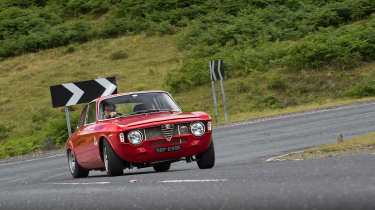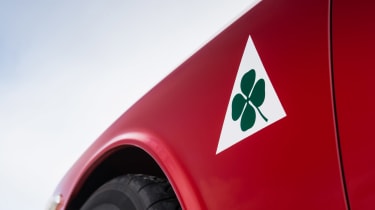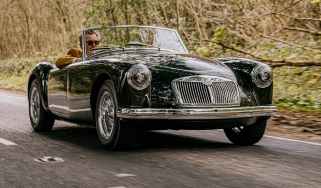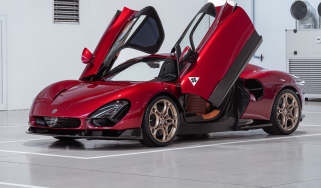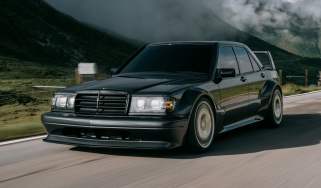Alfaholics GTA-R 270 review - Re-imagined icon
Can a 1960s Alfa GTA really justify a Ferrari-money price tag? When it's an Alfaholics GTA-R 270, it can
Dashing down the narrow lanes that lead to the hairpin, the little Alfa feels absolutely at home. Like a red rat up a green drainpipe, it is scurrying between the tight banks and nipping through the corners. I reach for the long gearlever and find the smooth surface of its polished black top, feeling it buzz tinglingly in my left palm as the revs reach 7000rpm before I pull back smartly for fourth. A moment or two more on the throttle, then it’s onto the middle pedal, pressing hard with the ball of my foot, leaning on the unservoed brakes, canting my heel across to blip the throttle once, twice as we line up for the left-hand switchback.
Tucking the nose into the bend with the small steering wheel, the front hooks in sweetly towards the kerb, meaning the throttle can be applied early and with a bit of purpose. The front momentarily lightens past the apex, pushing wide of the line a fraction, but then the tail swings round as the road opens out and the steering seems to begin correcting the car almost of its own accord. This isn’t a snappy stab of oversteer but a decent drift. Throttle wide open, diff locked, the car is almost walking itself wide on the exit of the bend as it slides up the road. There’s time to enjoy it and the huge smile on my face and the feeling in my stomach says I really am.
> Also read: Alfa Romeo Giulia Quadrifoglio video review
While you have almost certainly heard of Singer and no doubt were aware of Jaguar building six ‘new’ Lightweight E-types, you might not be so familiar with Alfaholics and its GTA-R. The company was started in the 1970s by Richard Banks, who ran race teams and then restored and sold 105-series Alfas. When his sons Andrew and Max came along, they graduated from karting to building and racing their own Alfa.
‘We developed a Watt’s linkage suspension and tubular wishbones to modify the geometry and make our race car quicker and quicker,’ says Max. ‘Then, after university, I joined Alfaholics and we decided to basically productionise all our race-car parts and offer them to customers around the world. We made a batch of bits and they sold ridiculously quickly, so we knew there was a market for this!’
The car Alfaholics has brought to south Wales today is actually Max’s own. He began developing it ten years ago from a 200,000-mile 1967 ‘step-nose’ GT 1300 Junior, gradually updating it, honing it, tweaking it and driving it out to the Nürburgring and Spa for testing (and for fun).
‘The idea was to try to keep the essence of it being a 50-year-old car in terms of the body shape – using original lights, et cetera – so that it looks like an original GTA,’ says Max. One thing that has been changed very slightly as far as the looks of the car are concerned is the wheels, but there are sound engineering reasons for this, as Max explains: ‘To get better tyres, bigger brakes and better suspension geometry, we’ve recast the original, 14-inch diameter wheel in 15 inches. Now we’ve got a 300mm brake disc with a six-pot caliper in the front and the extra inch also gives us better roll centres and caster. The rear axle’s tweaked for camber and toe, to improve the grip and setup for the tyres, and then the top reaction arm, which originally is a cast-iron part, we redo in aluminium and then put a spherical bearing in the back of it to allow the axle to articulate nicely over the bumps. A lot of cars end up with heavy-duty rubber bushes to try to stop the axle from moving sideways, but this doesn’t allow the axle to articulate and you feel the back of the car bobbling around. We put a uniball in the back, which gives us no lateral movement at all but allows the axle to move vertically.’

